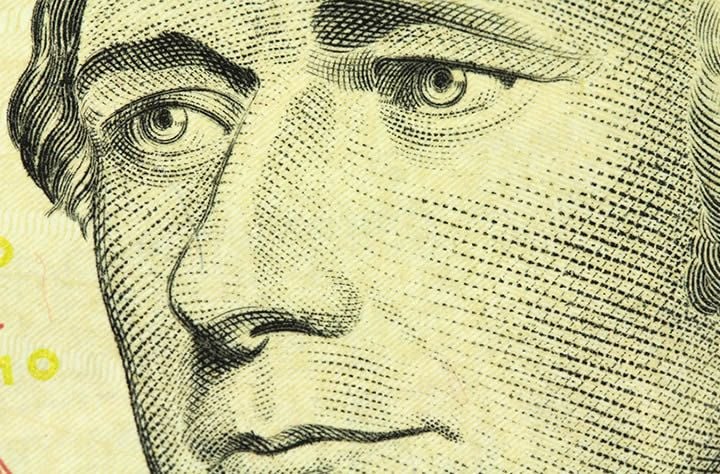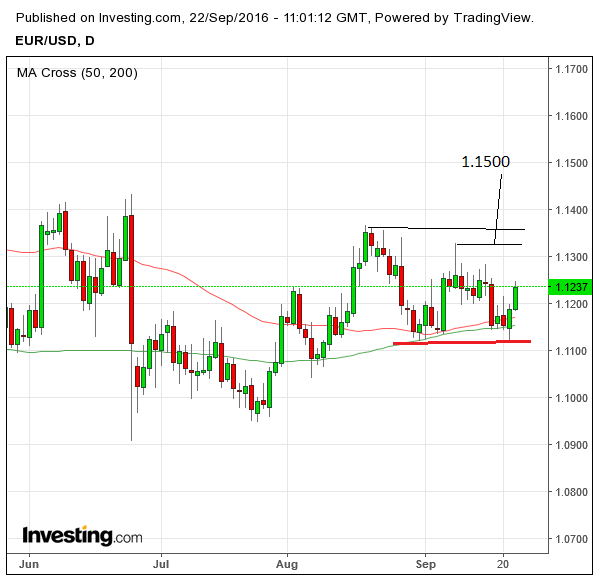The EUR/USD Exchange Rate is Biased Higher, EUR/USD Break-Out Looms

The US dollar retreated across the board during the second part of the week following the outcome of the September FOMC meeting ensuring EUR/USD successfully defended the 1.11 watermark and studies suggest markets are positioning for a potential break higher in the pair.
A subdued dollar following the FOMC’s decision to keep rates unchanged mid-week ensured that the US Dollar was the third-worst performing currency in G10 - beating the Pound and New Zealand Dollar but under-performing the rest of the pack.
Ahead of the FOMC EUR/USD had been flirting the breaking down below the 1.11 level which had held and repelled the exchange rate at the end of August.
At the time of writing we see the EUR/USD exchange at 1.1228 having fallen back from its best of 1.1257 reached on Thursday the 22nd.
Near-term momentum remains positive with the pair trading above both the 20 and 50 day moving averages which advocate for further gains.
Indeed, the pair remains in the recovery trend that commenced in mid-August.
From a technical point of view, the standout observation from the charts is the double whammy of support offered by the combination of the 50 and 200-day moving averages at 1.11.
A break above the 1.1329 highs would be critical to solidifying the bullish case, and a move above the key August highs at 1.1367 even more compelling for the bullish argument.
Such moves would be expected to confirm a rally back up to the 1.1500 ‘mezzanine’, before the main ceiling at 1.17.
Why the Euro Refuses to Fall
The euro remains supported by various fundamental drivers.
The ECB’s decision to keep its policy unchanged at the last ECB meeting was another reason for the EUR recovery too, as many analysts were expecting some sort of policy response, or at least an acknowledgement that something was in the pipeline – in the end they got neither.
Morgan Stanley’s Hans Redekker says he believes the euro is unlikely to weaken substantially due to a combination of the Eurozone's sizeable current account surplus and weak banks who cannot lend out the surplus money from the current account, and ‘recycle it’.
This recycling would typically place downward pressure as lent euros are converted into the foreign currency of the client.
A further supportive factor which contrasts in many ways to the Morgan Stanley analysis, but is nevertheless supposedly relevant, is the impact of back-flows from emerging markets.
This occurs when investors get jittery and sell their EM assets – mainly bonds – and repatriate their money.
Due to the euro’s perennially low rates of borrowing (currently at 0.0%) many international investors had borrowed in euros to take advantage of the ultra low borrowing costs and used that money to invest in high-yielding riskier debt from emerging markets.
During times of risk aversion when the outlook for the global economy looks poor the euro rises due to these repatriation flows.
Likewise, when it looks like the Fed will raise rates there can be some back-flow as high US rates and the consequently strong dollar are seen as negative for emerging markets much of who’s debt either originates from the US or is denominated in dollars.
Then there is the steady recovery in the Eurozone itself, which assuming it continues is another supportive factor for the euro.
The main negative is fears that the union will break up due to other nations having referenda similar to the UK Brexit vote and the union shrinking.
For the dollar it all hinges on the Fed and when they raise interest rates, however, the current vogue for expecting rates to be lower for longer, has taken some of the oomph out of any dollar gains from a single rise of 0.25%.
In relation to the EUR/USD pair, readers may note that a rate hike will also help raise the Euro as well as the dollar, due to repatriation flows from EM fears, so EUR/USD may not go down as much as expected after a Fed rate rise.





